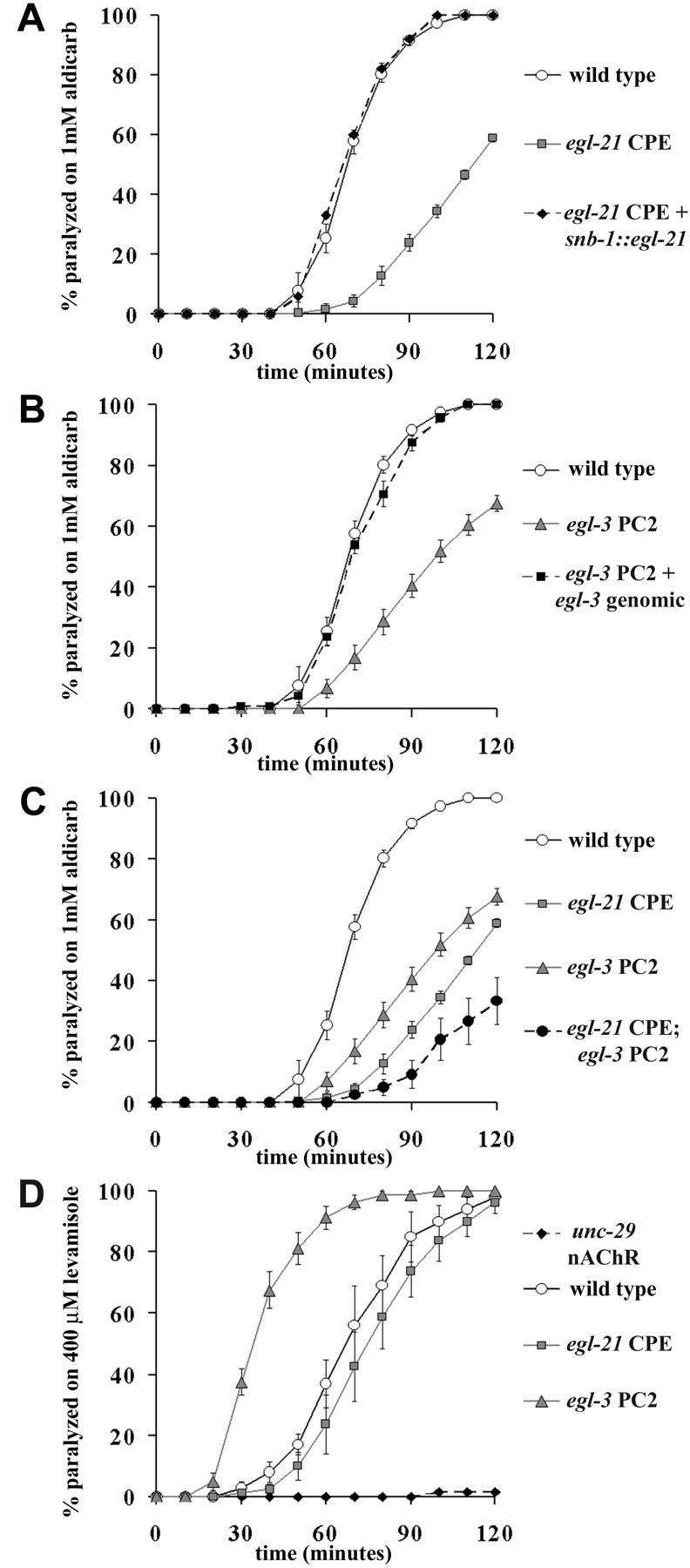Fig. 5.

The egl-21 CPE andegl-3 PC2 mutants have decreased steady-state acetylcholine release at ventral cord NMJs. Steady-state release of acetylcholine from ventral cord NMJs was assayed by measuring the time course of paralysis induced by aldicarb, as described in Materials and Methods. A, The egl-21 CPE mutant was resistant to aldicarb (indicated by the delayed paralysis). The aldicarb resistance was rescued with a transgene driving the expression of GFP-tagged EGL-21 in all neurons (using the snb-1promoter). B, The egl-3 PC2 mutant was resistant to aldicarb, and the aldicarb resistance was rescued with theegl-3 PC2 genomic construct. C, Theegl-21 CPE;egl-3 PC2 double mutant was more aldicarb resistant than either single mutant. Aldicarb resistance could reflect a decrease in release of acetylcholine by motor neurons or a decrease in muscle responsiveness. Muscle sensitivity to acetylcholine was determined by measuring the time course of paralysis induced by levamisole, an acetylcholine receptor agonist.D, egl-3 PC2 is hypersensitive to levamisole, whereas egl-21 CPE has normal levamisole sensitivity. Control animals lacking the unc-29nicotinic acetylcholine receptor were resistant to levamisole paralysis. The levamisole sensitivity of egl-21 CPE andegl-3 PC2 mutants indicates that the aldicarb resistance phenotype (A, B) is caused by decreased acetylcholine release from motor neurons.
